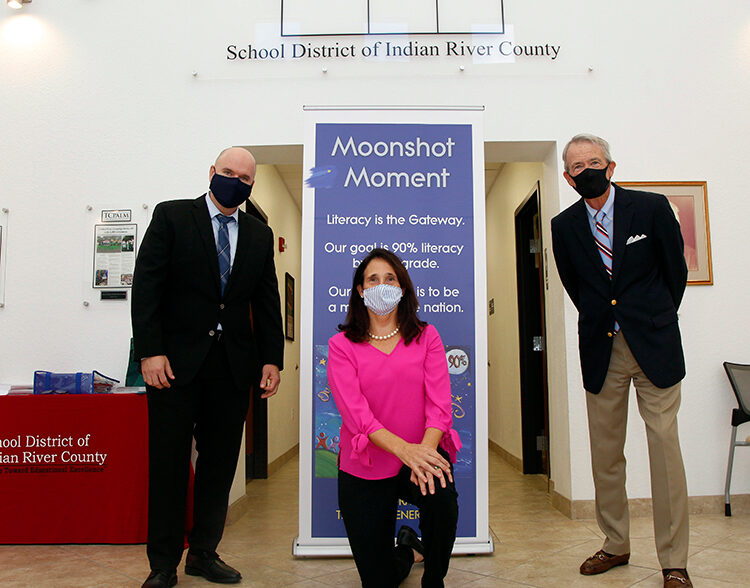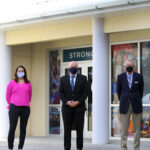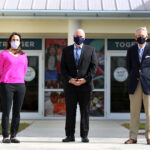
The Learning Alliance, founded 11 years ago to address the level of literacy in Indian River County, recently hosted a virtual breakfast webinar entitled “Saving a Generation of Children.”
More than 100 guests logged on for a panel discussion with local and national literacy proponents, centering dialog around the question: How do we combat the learning loss created by COVID and save a generation of children?
“Today’s topic really is about resilience and recovery,” said Barbara Hammond, TLA co-founder and CEO. “This work is about us being resilient and developing the skills to adapt and innovate in the moment and get up quickly as COVID and other challenges knock us down.”
A brief video featured community leaders and children commenting on the importance of reading proficiency in creating a “brighter future full of literate, creative and compassionate citizens.”
“This is a journey that we are all on together to really help our kids and create the conditions necessary for 90 percent reading level to be achievable,” said Hammond.
Ray Oglethorpe, TLA board chairman and founder, reminded listeners that from kindergarten to third grade children learn to read, and thereafter read to learn.
Statistically, he said that when children can’t read proficiently, they are four times more likely to drop out of high school and become juvenile delinquents, adding that 75 percent of families on welfare, 85 percent of unwed mothers and 90 percent of individuals in prison are poor readers.
“Left unchecked, these dismal statistics are only going to get worse due to the impact of COVID-19 on learning gains for our children,” said Oglethorpe.
Citing data from consulting firm McKenzie & Company, he said only 20 percent of students nationwide are in a physical location with a teacher, and that projections indicate an average learning loss of five to nine months, compounded over time, by the end of this academic year.
Oglethorpe said we are at risk of an entire generation of students being unprepared to succeed in the global economy, or participate in higher education, military service or civilian service.
Calling this a decision point in the education system, he said how we respond will dictate where we will be in five years. Communities will have either lost a generation of kindergarten through fifth-grade students to COVID, or they can win the battle and save this generation.
School Superintendent David Moore spoke about how the pandemic has impacted students locally, and how the extended learning opportunities offered by TLA is helping to change the narrative.
Moore, who accepted the position just before the COVID lockdown, did so in part because he “saw a community that had a high expectation and a belief that through partnership and commitment and collaboration, we can transform the public school system within that community.”
He recapped efforts over the past year to build on a foundation of excellence by recruiting highly effective leaders focused on improving the lives of students, during a time when schools were forced to redefine the academic model by providing virtual learning, meals, computers and Internet access.
“We went from the re-creation and redesign of the school system to re-creating systems and educational opportunities for students as a result of the pandemic,” explained Moore. As students began returning to school, he said they were “significantly behind where they typically would be in any other year; 5 percentage points on average.”
Currently, Moore said, 84 percent of local students are back in brick-and-mortar schools, albeit in a more complex environment.
“We’ve been able, through this partnership, to enhance the skills of our teachers to respond to the vast learning needs of students in classrooms. That individualized support is something that is going to help fill and eliminate the gap for students,” said Moore.
Ralph Smith, managing director of the National Campaign for Grade-Level Reading, spoke of the effects the coronavirus has had on students nationwide, calling the collaboration between TLA, the school district and the Moonshot Community Action Network a model for the nation.
While the abrupt closure of schools and early childhood programs to contain the coronavirus undoubtedly saved lives, he said an unintended consequence has been an unprecedented learning loss that, left unattended, could be catastrophic for a generation of students.
“As with the virus itself, the learning loss is most acute with those children with pre-existing conditions,” said Smith. “And in this case, the pre-existing conditions are children with special educational needs, children whose parents have to work, children living in homes with little or no connectivity to the Internet and too few devices to be able to manage what school has to offer.”
He said as many as 1.1 million students nationwide could drop out of high school over the next several years because of COVID-19 learning loss, and that the impact has the potential of producing a GDP loss of between $173 billion and $300 billion per year, a “hurt that could last a lifetime.”
Smith said he references the Indian River County Moonshot collaborative whenever he is asked for an example of an effective mechanism for change, noting that like any secret sauce, the magic is in the mix.
“In Indian River County, you have undertaken to transform and make an ally of an entire community, imbuing it with a sense of agency fueled by that powerful Moonshot aspiration,” said Smith.
To combat the learning loss, the Learning Alliance has committed to fund 17 positions in the schools, instructional coaches who will help to bridge the ever-widening gap due to the pandemic.
“We can’t allow this generation to fail, and I know we won’t here in Indian River County,” said Oglethorpe.
Photos by Kaila Jones





